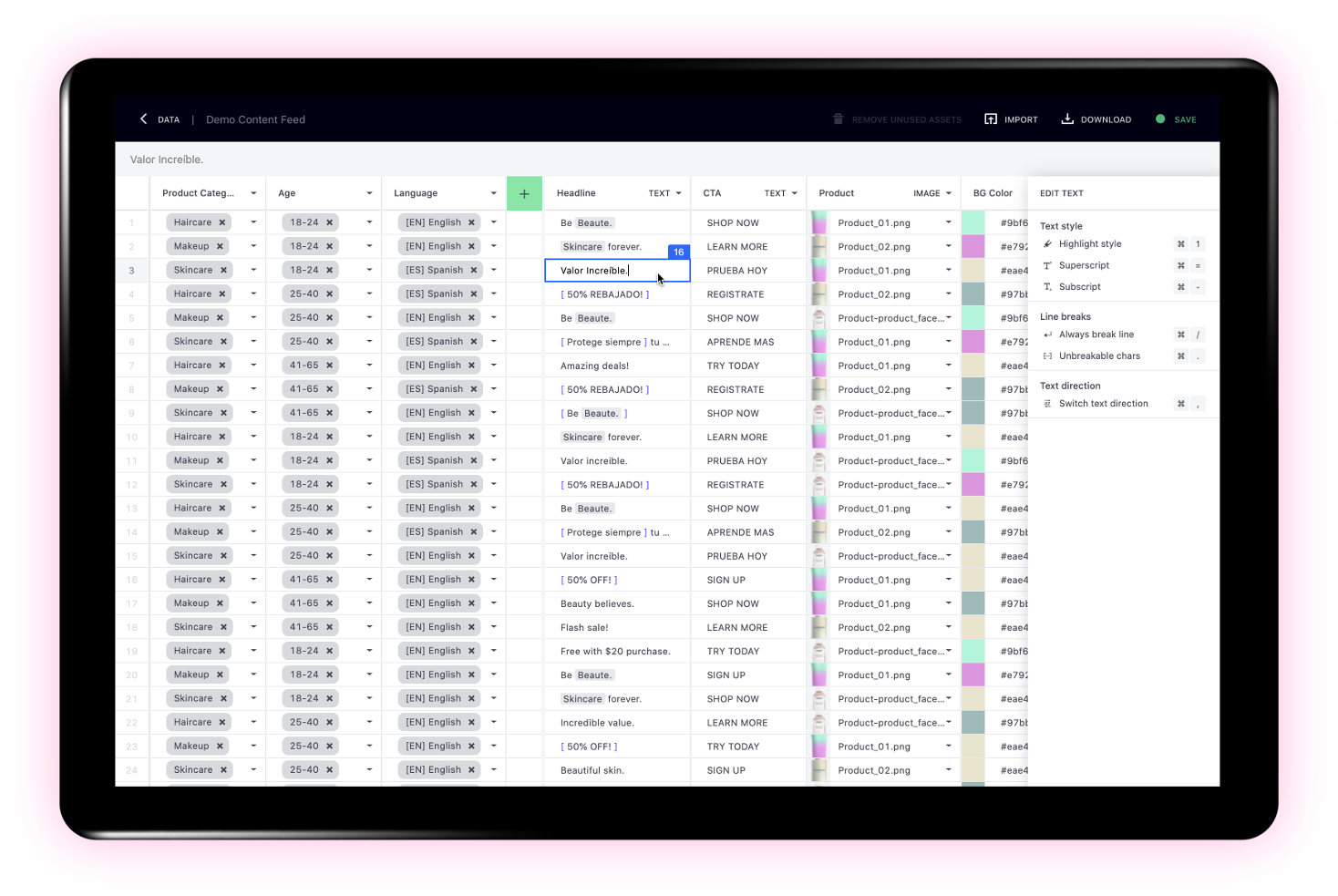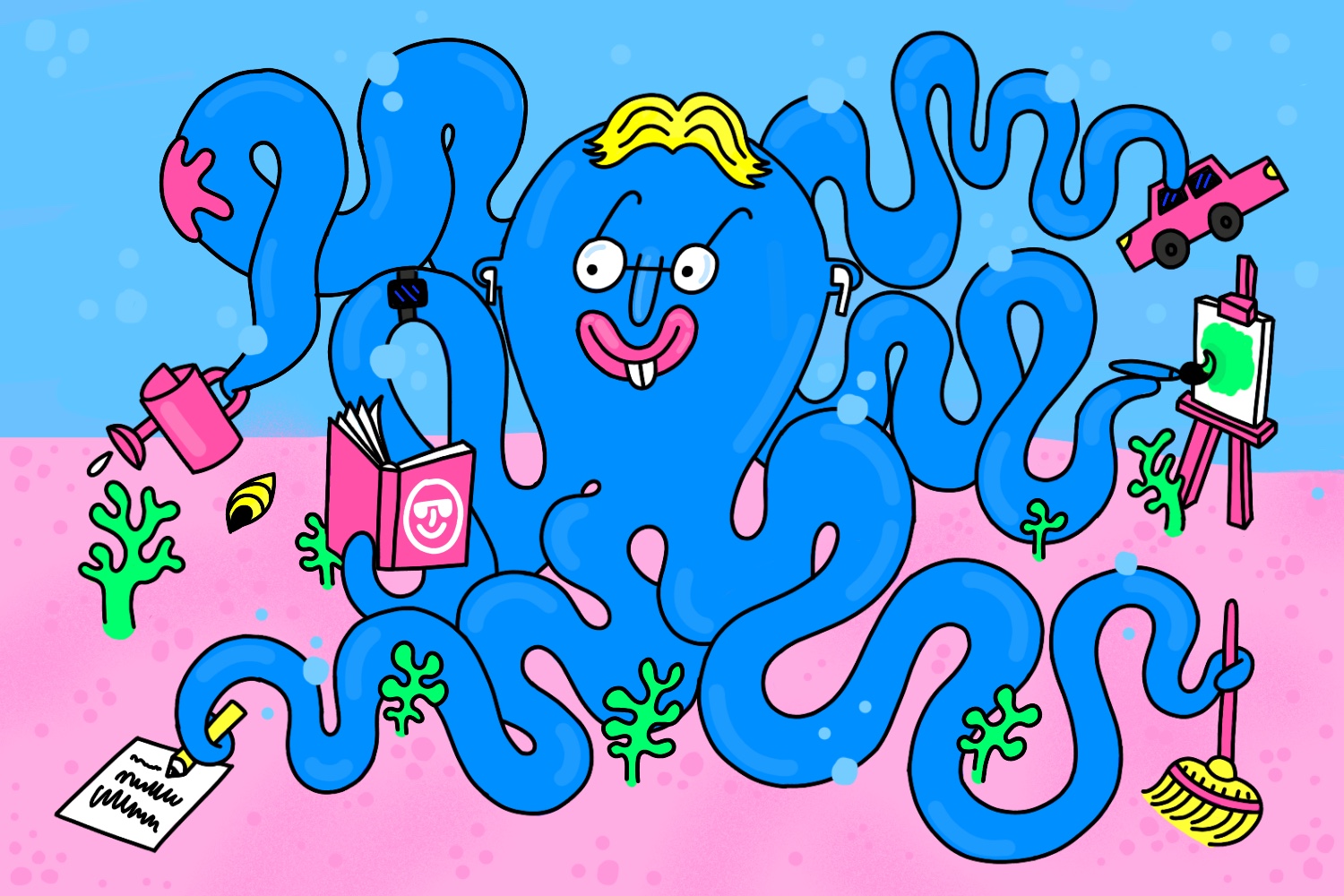Designers have grit. Their passion and perseverance push them to break through their creative boundaries, but there’s one thing they don’t have: Time.
The majority of marketers (86%) say that their creative team needs more time to devote to the creative process. When designers don’t have the bandwidth to fully work through creative ideation, the end results fall flat. We know this is a pain point for many organizations because 63% of marketers say very few brands are doing creative ads right now. Time constraints add additional stress that can inhibit creativity which causes brand marketing to suffer.
As marketers, what can we do to help free up time for our creative teams? Let’s look at one of the most time-consuming creative tasks: versioning. When designers create new versions of the same creative look one-by-one, these repetitive tasks eat away at the time they could be spending on more creative work. Instead, teams can introduce automation. Automation eliminates monotonous tasks to free that time up for creative teams. By automating creative production, developing large volumes of creative variants for testing becomes a breeze.
Here’s everything you need to know about different testing approaches and how to use them:
Types of tests
Let’s start with the basics. To find the right approach for your team, we broke down the three main types of testing methods.
- A/B: Also known as split testing, A/B is when you create a second version of the original creative that has a different element. It could be a different headline, model, button, etc. The beauty of A/B is its simplicity of testing only one element at a time to find out what performs best.
- A/B/n: This method is a continuation of A/B testing. The “n” refers to the unknown number of versions you will test. A/B only tests two versions, whereas A/B/n tests as many as you want. Like A/B, this approach typically tests just one element at a time. For example, if you have five different headlines you want to try, you can test them all as different versions to see what sticks. This approach is excellent for diving deep into individual element success.
- Multivariate: The most complex approach is multivariate testing. This is when different combinations of elements are tested. Version 1 could have model A, headline B, button C; Version 2 could have model B, headline B, button C; Version 3 could be model A, headline C, button A, and so on. This method can unlock great insights into element combination performance.
What to test
Now that we’ve covered the different types of tests and their benefits, it’s time to talk about design elements. We mentioned some earlier, but there’s more to test than just headlines. There’s subcopy, CTAs (call-to-actions), and it doesn’t stop at copy. This is when you can dig deep into your asset library and try different models, poses, and product shots in layout. We can take it one step further and test a variety of combinations of these elements. Maybe one layout is model + product, another is just the model, and the next is the individual product. The possibilities are endless.
The winning solution for testing: Creative Automation
Creative Automation makes it easy for designers to build templates and produce the creative look and feel they want to achieve. Once templates are complete, marketers can go into the platform and adjust content without ever having to open a design file. Team members can swap out elements without a hitch, as the feed separates content from design. The feed works as a central content repository, which means marketers can effortlessly tag and organize headlines, product assets, background colors, CTAs, and more all in one place.

Thanks to Creative Automation, designers no longer have to manually produce different creative versions one-by-one for testing. Instead, they can pass the baton to marketers to efficiently adjust content as needed. That means more time for designers to be creative and come up with exciting ideas, and more empowered marketing teams.
If you’re interested in learning how to use Creative Automation to free up time for your designers, then check out this video or contact us today!

